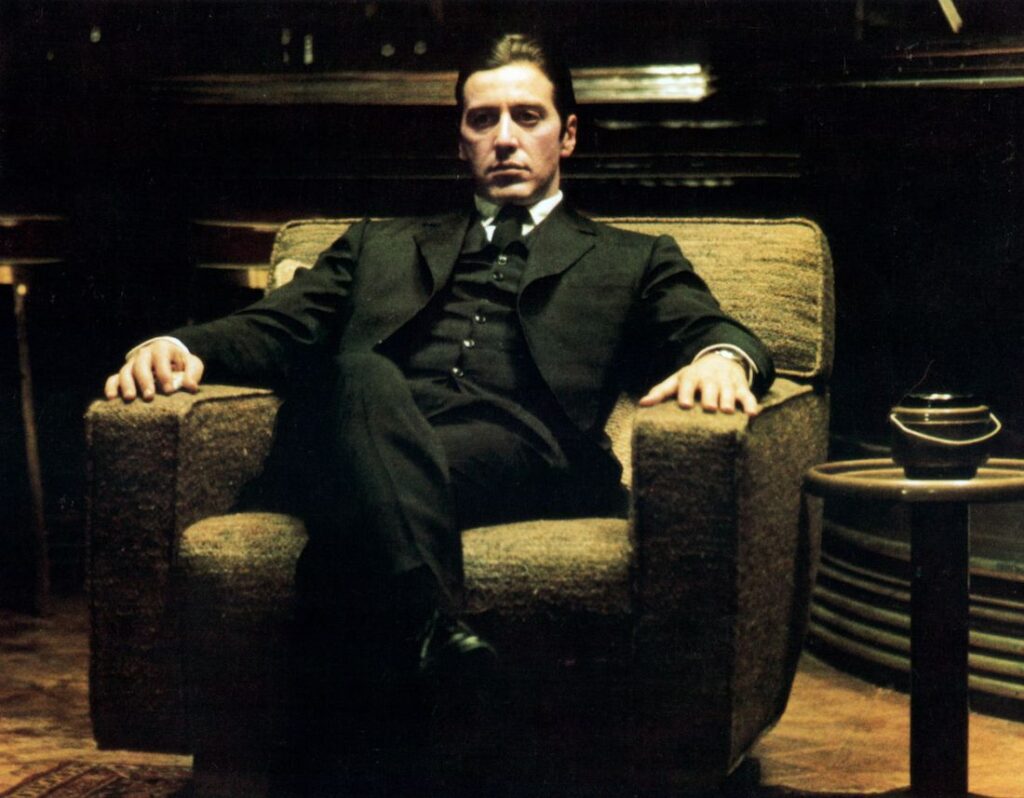There’s nothing better than a good villain — except when audiences are introduced to a great one. But what separates the good from the great? And what can screenwriters do to take their villain to that next level of greatness? It’s actually quite simple. With that in mind, here we share five ways you can inject your villain with a little more oomph, using a cinematic tactic called empathy.
Let’s define empathy before we move on to the five ways you can use it to create better villains.
What Is Empathy in Screenwriting?
Empathy can be best defined as the act of comprehending, acknowledging and sensitively relating to the emotions, thoughts and encounters of another. In movies and TV shows, audiences experience these character elements vicariously. The intention is for readers and audience members to immerse themselves in your characters’ lives. That is exactly the kind of cinematic experience that captivates most people.
Empathy Doesn’t Require a Character to Be Likeable
Old screenwriting books emphasize the necessity for protagonists to possess an inherent likability. However, in contemporary cinema and television platforms, this guideline has progressively blurred. Flawed characters and antiheroes have become central protagonists in movies and television.

The Last of Us (2023-)
Television series such as The Sopranos, Breaking Bad, The Last of Us, Game of Thrones, Yellowstone and others have excelled in portraying characters who may not always be endearing. Yet we still manage to develop empathy towards them due to their distinctive character traits.
Read More: Antihero with a Heart: Analyzing Joel from ‘The Last of Us’
Some of our greatest cinematic icons have been antiheroes that blurred the lines of protagonist versus villain. Michael Corleone in The Godfather is perhaps the greatest example.
- He becomes a murderer.
- He orders the death of others.
- He shuns his wife.
Yet we still look upon him as someone to root for. Why? Empathy.

The Godfather (1972)
5 Ways to Create Empathy for Your Villains
1. Inject Tragedy Into Their Lives
When we see any type of character dealing with any type of loss, empathy is created — even in villains. Tragic backstories can explain why they have turned into the villain they now are.
- Perhaps they’ve lost a loved one, which has triggered their reactive plans against the hero and the world they protect.
- Maybe they have been wronged or wrongly prosecuted.
- What if they are avenging someone?
When we see the humanity in villains dealing with past tragedies, we empathize with them and feel as if the lines between right and wrong, light and dark, and good and evil are blurred. This creates a more cathartic feeling as we walk out of the theater questioning whether or not the villain was in the right or wrong — or at least it’s understandable why they did what they did.

Breaking Bad (2008-2013)
2. Coping with Illness, Addiction and Other Internal or External Challenges
Whether it’s a battle against cancer, the burden of shame, the weight of guilt, the grip of depression, the grip of anxiety, the complexities of schizophrenia or the clutches of addiction, when you give your villain an internal or external struggle, the audience can’t help but feel empathy for them, even if they are a villain.
If Breaking Bad had solely revolved around a man’s decision to embark on a life of crime for monetary gain, he could have been a mere villain or antihero. However, because he grappled with cancer and undertook those actions for the sake of his family, the audience experienced a heightened sense of empathy. While he was technically an antihero and lead protagonist to root for in the series, the lesson learned is that physical and mental challenges can inject empathy into a villain’s story that makes them more memorable in the end.

Star Wars: Episode III – Revenge of the Sith (2005)
3. Make Them Fallen Heroes
If a villain was once good (Anakin Skywalker/Darth Vader), and that is present within the story, we feel empathy for them because they’ve fallen from glory — and we want them to find their way back. And the more we see them struggle to choose right from wrong, the more we’ll be emotionally affected by whatever choices they make.
4. Give Them Shades of Humanity
Sometimes a villain just needs to be a villain. We get it.
However, you still can find ways to showcase their humanity. It could be something as simple as having a love for a pet, showing loyalty to their minions or underlings, or creating a gesture they make that goes against their otherwise evil intentions.
Even Frankenstein’s Monster showcased true empathy when he interacted with the little girl.
It doesn’t matter if their humanity is forever lost or hopeless to prevail. It just needs to be present now and then to add a little flavor and depth to their villainy.
5. Have Them Redeem Themselves
Sure, a villain can go out with a bang — void of any redeeming moment before their demise, but redemption by the end of their character arc leaves the audience in an empathetic state that makes the villain even more memorable by the end of the story.
- Showcase a change of heart.
- Have them understand what they did was wrong.
- Make them sacrifice themselves for the greater good.
And if you don’t want them to be that redeemed, find creative ways to make their perspective understood.
The villain in Black Panther, Killmonger, seeks to overthrow the Wakandan throne. And he’s willing to kill to do so. However, his tragic past and desire to rectify historical injustices provide a nuanced perspective. His final actions reflect a selfless act that challenges T’Challa’s approach, leading to a degree of redemption.
Case Studies: AFI’s Top Five Villains of All Time
The American Film Institute created a list of fifty of the greatest movie villains of all time. To prove our point about the importance of empathy when it comes to creating better villains, let’s find the ways that we can empathize with AFI’s top five villains.
1. Hannibal Lecter (The Silence of the Lambs)
Despite his gruesome nature, Hannibal Lecter’s exceptional intelligence and refined tastes can captivate audiences. His ability to understand and manipulate others, coupled with his tragic past, creates a complex character that elicits a strange fascination and empathy. We also empathize with his protectiveness of Clarice. When he lets her go, we see some of the humanity left in him.
2. Norman Bates (Psycho)
Norman Bates is driven by a severe psychological disorder. He struggles with his fractured identity. Audiences can empathize with his internal battles and the torment caused by his domineering mother figure. Because of this, we can view him as a tragic figure caught in a web of mental anguish.
3. Darth Vader (Star Wars)
Darth Vader, formerly Anakin Skywalker, undergoes a tragic transformation from a gifted Jedi Knight to a powerful Sith Lord. His internal conflict, stemming from the loss of loved ones and manipulation by Emperor Palpatine, evokes empathy as audiences witness his struggle between the light and dark sides of the Force. Sure, in the first Star Wars, he’s a less sympathetic presence. But as his arc through the original trilogy concludes, we feel empathy for him by the end. He sacrifices himself for his son. And when we watch the prequels, we learn more about the Anakin side of him as we watch the tragic downfall of his character as he succumbs to the Dark Side of the Force. But it’s his final moments in Return of the Jedi that make us empathize with him most.
4. The Wicked Witch of the West (The Wizard of Oz)
She is initially portrayed as a malevolent force. However, the Wicked Witch of the West can be represented as a marginalized and misunderstood character. Her quest for revenge against those she perceives as oppressors can be seen as a response to her mistreatment. Sure, it’s a stretch. But when you look at things from her perspective (her sister was killed by Dorothy), you can find empathetic moments if you’re creative enough.
5. Nurse Ratched (One Flew Over the Cuckoo’s Nest)
Nurse Ratched embodies the oppressive authority figure within a mental institution. While her strict demeanor and abuse of power make her more of an antagonist than a villain, understanding the pressures she faces within the system may generate empathy for the difficult choices she makes, even if they are detrimental to the patients.
All of these perceived villains have empathetic qualities that make them better than mere evildoers. Now, let’s explore ways screenwriters can create more empathy for the villains they conjure.
—
Creating empathy for villains adds more depth to your stories and the characterizations within. Sometimes you can use a lot of empathy for particular stories. Other times all you need is just a little.
But if you’re looking for ways to create better and more memorable villains, empathy is the way to go.
Read More: 12 Villains That Every Screenwriter Should Study
Ken Miyamoto has worked in the film industry for nearly two decades, most notably as a studio liaison for Sony Studios and then as a script reader and story analyst for Sony Pictures.
He has many studio meetings under his belt as a produced screenwriter, meeting with the likes of Sony, Dreamworks, Universal, Disney, and Warner Brothers, as well as many production and management companies. He has had a previous development deal with Lionsgate, as well as multiple writing assignments, including the produced miniseries BLACKOUT, starring Anne Heche, Sean Patrick Flanery, Billy Zane, James Brolin, Haylie Duff, Brian Bloom, Eric La Salle, and Bruce Boxleitner, the feature thriller HUNTER’S CREED, and many produced Lifetime thrillers. Follow Ken on Twitter @KenMovies and Instagram @KenMovies76.
CHECK OUT OUR PREPARATION NOTES SO YOU START YOUR STORY OFF ON THE RIGHT TRACK!
The post Using Empathy to Create a Better Villain appeared first on ScreenCraft.
Go to Source
Author: Ken Miyamoto


